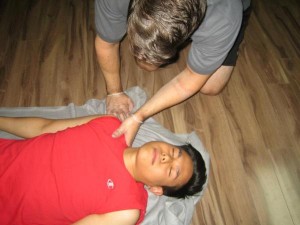A seizure is an uncontrollable event that occurs if there is an abrupt, abnormal bursts of electrical brain activity. The seizures can be scary for the individual and those around at the time of an episode.
The indications of seizure can range from blank staring to momentary loss of consciousness and convulsions. Luckily, there are steps that you should do when a seizure occurs.
Do not panic
When a seizure occurs, the main objective is to keep the individual safe until the episode stops. Remember that there is nothing that can be done to stop an episode once it starts. It is vital to stay calm and reassure the individual. Most cases usually last for a few seconds.

Lying position
Carefully ease the individual to the ground. Position on one side to keep the airway open. Place a pillow or folded jacket on the head. Do not attempt to hold the individual down while he/she is jerking.
Clear the area
Get rid of any hard or sharp objects near the individual to prevent any head injuries. Move any furniture as needed. Loosen the clothing around the neck and remove eyeglasses if the individual is using one.
Do not provide the individual with water, food or medications until fully recovered. If the individual is still agitated, stay in a safe distance but not too far in case there is a need to prevent an injury.
Length of the seizure
Monitor how long the episode lasts. If it lasts longer than 5 minutes without signs of settling, call for emergency assistance. The seizure can lead to difficulty breathing which can be life-threatening.
Assessment
Once the individual has recovered from the seizure, ask questions to check if he/she is okay such as name, location, time of the day and if they know what occurred. If the individual is alone, offer to call a taxi or a family member to bring him/her home.
If the individual appears confused and could not answer questions, provide reassurance and call for emergency assistance. Stay with the individual until completely recovered or until the medical team has arrived.
Quick Note / Disclaimer
The material posted on this page on a seizure is for learning and educational purposes only. To learn to recognize and manage a seizure, register for a first aid and CPR course with Ottawa First Aid.
